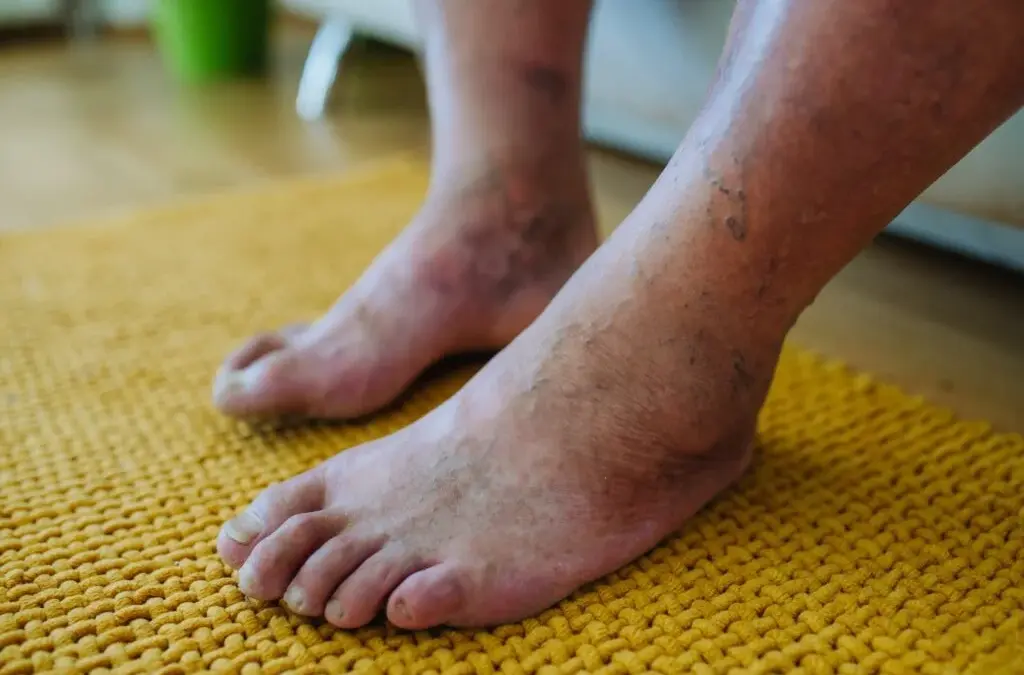Introduction: When “It’s Just a Foot Thing” Becomes Something Bigger
If you have diabetes, you’ve probably been told to keep an eye on your feet. But what does that actually mean? Why all the fuss about toes, heels, and the occasional foot cramp?
Here at Accelerate Therapy & Performance, we talk to people every week who didn’t realize just how much diabetes could affect their feet—until it did. From minor tingling to infections that won’t heal, diabetic feet are no joke. And ignoring the signs? That’s where things can get dangerous.
Let’s walk you through exactly why your feet matter so much when you’re living with diabetes, what to watch out for, and how to take care of your feet before it’s too late.
Understanding Diabetic Feet: Why Diabetes Changes Everything
To get why your feet are at risk, you’ve got to understand how diabetes works. Diabetes affects your circulatory system and nerves, especially in your lower extremities. Over time, high blood sugar damages small blood vessels and nerve endings—what doctors call neuropathy and vascular insufficiency.
Your feet are the furthest point from your heart, which means they’re more likely to suffer from poor circulation. Combine that with numbness from nerve damage, and you’ve got a recipe for unnoticed injuries, slow healing, and increased infection risk. That’s how a tiny blister can turn into something much worse.
When we talk about “diabetic feet,” we’re usually referring to a combination of:
- Peripheral neuropathy – You lose feeling in your feet.
- Peripheral artery disease (PAD) – Blood flow is reduced, slowing healing.
- Skin breakdown – Cuts and sores are more likely to get infected.
And the scary part? You might not even feel the damage happening until it’s already serious.
Common Causes of Diabetic Foot Problems
There’s no one-size-fits-all answer for why foot issues pop up with diabetes, but here are some of the usual suspects:
1. Nerve Damage (Peripheral Neuropathy)
High blood sugar can damage your nerves, especially in your legs and feet. That means you may not feel heat, cold, or pain—so you might not notice a cut or blister until it gets worse.
2. Poor Circulation
Diabetes can cause your blood vessels to narrow and harden, making it harder for blood (and healing nutrients) to reach your feet. This means even small injuries may take a long time to heal.
3. Ulcers and Sores
Because of the issues above, pressure points on your feet (like heels or the balls of your feet) can turn into open wounds. These diabetic foot ulcers can become infected quickly.
4. Infections
Without enough blood flow and sensation, infections can creep in easily. In severe cases, untreated infections can lead to hospitalization—or even amputation.
5. Structural Issues
Conditions like bunions, hammertoes, and calluses can develop and worsen faster in diabetic patients. Without proper footwear and regular checks, these minor deformities can become major problems.
6. Lifestyle Choices
Smoking, poor diet, not managing your blood sugar—these all contribute to poor circulation and higher risk of foot issues. Add in poor footwear choices and you’ve got a setup for serious complications.
Diagnosing Diabetic Foot Problems: When to Be Concerned
One of the biggest challenges? You might not notice anything wrong until it’s already a problem.
Here’s what we recommend for keeping tabs on your feet:
Do a Daily Foot Check
Look for:
- Cuts, scrapes, or blisters
- Redness or swelling
- Cracked skin, especially around the heels
- Black or blue skin (signs of poor circulation)
- Changes in temperature or color
If you can’t see the bottoms of your feet well, use a mirror or ask someone for help.
Know the Red Flags
These are signs you should see a doctor or physical therapist right away:
- Open sores or ulcers that don’t heal within a few days
- Pain or burning sensations
- Foul odor coming from the foot
- Skin that feels unusually warm or cold
- Changes in walking pattern or balance issues
Get a Medical Evaluation
At Accelerate Therapy & Performance, we offer specialized assessments to help you understand your risk. This might include:
- A monofilament test (to check for nerve sensitivity)
- Circulation checks (like ABI tests)
- Posture and gait analysis
- Footwear assessment
We also collaborate with your podiatrist or primary care provider to ensure you’re getting comprehensive care.
Treatment Options: From Home Remedies to Expert Help
If you’re already noticing some symptoms, don’t panic. There are steps you can take to manage the situation—and the earlier, the better.
At-Home Care
- Inspect your feet daily – Make this a habit.
- Wash gently and dry well – Don’t forget between your toes.
- Moisturize – But never between the toes (can encourage fungal infections).
- Wear diabetic-friendly socks and shoes – No barefoot walking, even at home.
- Keep your toenails trimmed – Straight across to avoid ingrown nails.
Physical Therapy
We offer personalized physical therapy programs at Accelerate Therapy & Performance that help with:
- Improving circulation through guided movement
- Reducing pain and inflammation
- Rebuilding balance and strength
- Teaching you safe foot-care routines and footwear guidance
- Preventing future issues before they start
Even gentle movement can make a massive difference in how your feet feel and function. We’ll meet you where you are and build a plan that works.
Medical Interventions
In more advanced cases, your doctor may recommend:
- Antibiotics for infections
- Wound care and debridement
- Orthotic inserts or custom footwear
- Surgery, in rare cases where circulation or bone structure is compromised
Prevention Tips: The Best Fix is Avoiding the Problem
The good news? With consistency and care, many diabetic foot issues are completely preventable.
Here’s what we encourage our clients to do:
- Control your blood sugar – The more stable it is, the lower your risk.
- Check your feet every single day – Yes, even if they “feel fine.”
- Avoid smoking – It restricts blood flow and slows healing.
- Stay active – Movement encourages healthy circulation.
- Wear the right shoes – Your shoes should protect your feet, not hurt them. We can help you choose!
- See a foot specialist regularly – Even if nothing feels wrong, a quick checkup can catch issues early.
Take the First Step Toward Healthier Feet
At Accelerate Therapy & Performance, we believe in treating the whole person—not just the symptoms. Whether you’re managing newly diagnosed diabetes or have been living with it for years, your feet deserve expert attention.
We’re not here to scare you—we’re here to help you feel confident and in control. Our team will guide you through proven strategies to protect your feet, manage pain, and prevent long-term complications.
Don’t wait for a problem to get worse. Book a consultation today at our clinic and let’s build a foot care plan that works for you.
Your feet carry you through life. Let’s make sure they’re strong enough for the journey.



